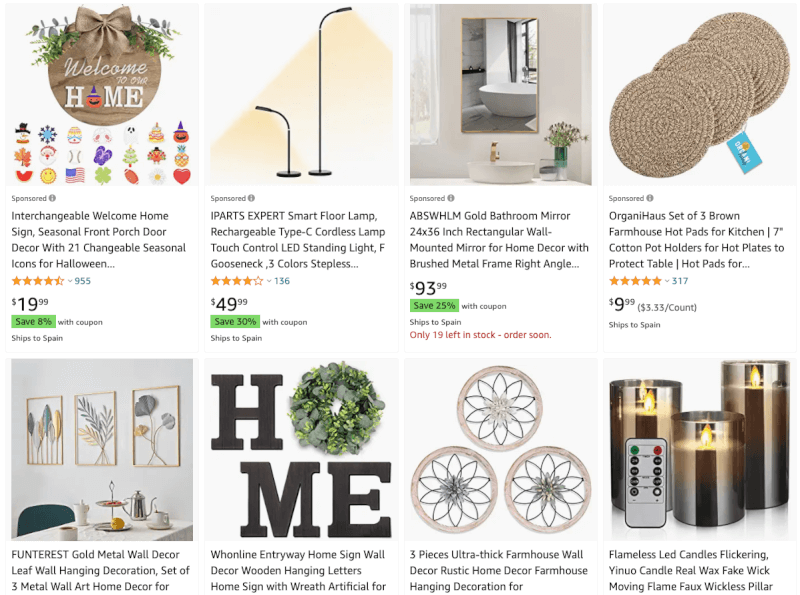At the intersection of aesthetics and functionality lies home decor—an industry vibrant with creativity and opportunities. With the rise of e-commerce, dropshipping has emerged as a favorable business model for many aspiring entrepreneurs. In this article, I will share my experiences alongside industry insights, guiding you through the incredible journey of dropshipping home decor.
What is Dropshipping?
Dropshipping is a retail fulfillment method where a store doesn’t keep the products it sells in stock. Instead, when a store sells a product, it purchases the item from a third party and has it shipped directly to the customer. This eliminates the need for inventory management, making it an ideal model for new entrepreneurs.
Why Choose Home Decor for Dropshipping?
The home decor industry is booming, driven by a growing consumer interest in interior design and personalization. Here are a few reasons why dropshipping home decor can be an excellent choice:
- Low Overhead Costs: You don’t need to invest in inventory, minimizing financial risks.
- Wide Product Range: Home decor encompasses a variety of products, from furniture to wall art, allowing for diverse offerings.
- High-Profit Margins: Unique and trendy items often have high markups.
- Growing Market: The home decor market is projected to grow significantly, driven by home renovations and decor trends.
How to Start a Dropshipping Home Decor Business
1. Choose Your Niche
Identifying a niche is crucial for differentiation in the crowded home decor market. You might consider:
- Eco-friendly decor
- Minimalist designs
- Vintage or rustic styles
- Luxury home decor
- Kids’ room decorations
2. Research Suppliers
Finding reliable suppliers is essential for your dropshipping business. Consider platforms like:
- AliExpress: A popular choice with countless home decor options.
- Oberlo: Integrates directly with Shopify for ease of use.
- Spocket: Focuses on suppliers based in the US and Europe for faster shipping times.
- Printful: Ideal for custom home decor items, like wall art or pillows.
3. Create Your Online Store
You can set up your online store using platforms like Shopify, WooCommerce, or BigCommerce. Each platform offers user-friendly interfaces and various themes tailored specifically for home decor.
Comparison Table of E-commerce Platforms
| Platform | Ease of Use | Cost | Customization Options | Best For |
|---|---|---|---|---|
| Shopify | Very Easy | Starting at $29/month | High | Beginners & Small Businesses |
| WooCommerce | Moderate | Free (Hosting costs apply) | Very High | WordPress Users |
| BigCommerce | Easy | Starting at $29.95/month | High | Growing Businesses |

4. Design Your Store
Invest time in creating a visually appealing and user-friendly website. Important elements include:
- High-quality images of products
- Compelling product descriptions
- Easy navigation and filtering options
- Optimized for mobile devices
5. Marketing Your Home Decor Store
Your marketing strategy should incorporate various channels to attract customers effectively:
- Social Media Marketing: Platforms like Instagram and Pinterest are perfect for showcasing home decor products.
- Content Marketing: Starting a blog about home decor can attract traffic and establish your authority.
- Email Marketing: Use newsletters to promote new arrivals and specials.
- Influencer Collaborations: Partnering with home decor influencers can amplify your reach.

Challenges of Dropshipping Home Decor
While dropshipping has many benefits, it also comes with its unique challenges:
- Shipping Costs and Times: Depending on your supplier, shipping could become expensive and slow, impacting customer satisfaction.
- Quality Control: Since you don’t handle products directly, ensuring quality can be tough. Request samples to verify.
- Competition: The ease of starting a dropshipping business means high competition; finding your niche is crucial.
Pros and Cons of Dropshipping Home Decor
Pros
- No inventory management required
- Flexibility in terms of location and working hours
- Ability to offer a wide range of products
- Low startup costs

Cons
- Lower profit margins compared to traditional retail
- Dependence on suppliers for product quality and shipping
- Potentially slower shipping times can affect customer satisfaction
- Difficulty in branding and standing out
Measuring Success in Your Dropshipping Home Decor Business
To ensure your business thrives, you’ll need to measure success using key performance indicators (KPIs):
- Conversion Rate: The percentage of visitors who make a purchase.
- Customer Acquisition Cost: How much you spend to acquire each customer.
- Average Order Value: The average amount each customer spends per order.
- Customer Lifetime Value: The total revenue a customer generates throughout their lifetime.

Frequently Asked Questions (FAQs)
1. Is dropshipping home decor profitable?
Yes, dropshipping home decor can be quite profitable, especially if you choose unique products and effectively market your store. Profit margins can vary but can be substantial if you tap into trends.
2. What are the best platforms for dropshipping home decor?
Platforms like Shopify, WooCommerce, and BigCommerce are popular choices among dropshippers. They offer a variety of tools to streamline your business operations.

3. How do I find reliable suppliers for home decor dropshipping?
Research platforms like AliExpress, Spocket, and Oberlo to find reputable suppliers. Read reviews and consider reaching out for samples to ensure quality.
4. Can I run a dropshipping home decor business from anywhere?
Absolutely! One of the main advantages of dropshipping is the flexibility to operate from any location with an internet connection.

5. What marketing strategies work best for home decor dropshipping businesses?
Utilize social media, content marketing, email marketing, and influencer collaborations to enhance visibility and attract customers.